Re-balance Cycle Reminder All MyPlanIQ’s newsletters are archived here.
For regular SAA and TAA portfolios, the next re-balance will be on Monday, April 28, 2014. You can also find the re-balance calendar for 2013 on ‘Dashboard‘ page once you log in.
As a reminder to expert users: advanced portfolios are still re-balanced based on their original re-balance schedules and they are not the same as those used in Strategic and Tactical Asset Allocation (SAA and TAA) portfolios of a plan.
Please note that we now list the next re-balance date on every portfolio page.
The Unbeatable 60%/40% US Stocks and Bonds Portfolio?
A user has posted the following questions and would like us to address them in our newsletter:
Based upon what I see, it doesn’t matter whether you were using TAA, SAA Opt, or SAA equal, for the last 1, 3 and 5 years, Vanguard Balanced has out performed all the Moderate plans. Only the crash within the 10 year horizon caused the Moderate plans to perform better and only slightly better at that. Your thoughts and observations on this finding would be appreciated. Why do you think this is so? What do you think will happen in the future? Why should one not follow any of the Moderate plans and just use Vanguard Balanced instead? What if your time horizon is, say, 10-15 years? (College funds) How about longer?
These are the great questions that many users might have. Before we answer these questions, we would like to remind readers that we have addressed similar topics in our newsletters several times. We would like again to recommend anyone who is new to browse the newsletter collections. In terms of performance comparison, many portfolios mentioned below were discussed in
February 17, 2014: Versatile Portfolios Review.
We also would like readers to review some concepts discussed in
December 30, 2013: How To Benchmark Portfolios.
First, let’s review the recent performance. We should clarify that the ‘Vanguard Balanced’ the user referred to in the question is Vanguard Balance Index Fund (VBINX). It has 60% in US stocks and 40% in US bonds.
Recent Performance
Most portfolios listed on MyPlanIQ.com are global oriented portfolios as they are constructed out of the available funds in an investment plan (such as a 401k plan or (commission free) ETFs for a brokerage). Though we use VBINX throughout in our comparison, it is really because there are not well recognized global balance index funds as benchmarks.
We use the moderate portfolios from MyPlanIQ Diversified Core Allocation ETF Plan, a typical ETF plan.
Global moderate portfolios vs. Vanguard balance (VBINX) comparison (as of 4/7/2014)
| Ticker/Portfolio Name | YTD Return** |
1Yr AR | 3Yr AR | 5Yr AR | 5Yr Sharpe | 10Yr AR | 10Yr Sharpe | AR Since 12/31/2000 |
|---|---|---|---|---|---|---|---|---|
| MyPlanIQ Diversified Core Allocation ETF Plan Tactical Asset Allocation Moderate | 1.4% | 9.0% | 6.5% | 11.4% | 1.09 | 10.1% | 0.89 | 9.2% |
| MyPlanIQ Diversified Core Allocation ETF Plan Strategic Asset Allocation – Equal Weight Moderate | 1.0% | 2.8% | 4.7% | 11.8% | 1.2 | 7.3% | 0.56 | 6.8% |
| MyPlanIQ Diversified Core Allocation ETF Plan Strategic Asset Allocation – Optimal Moderate | 0.9% | 5.4% | 5.8% | 12.8% | 1.16 | 7.8% | 0.54 | 4.9% |
| VBINX (Vanguard Balanced Index Inv) | 0.5% | 11.9% | 9.6% | 14.0% | 1.37 | 6.7% | 0.47 | 5.7% |
**YTD: Year to Date, not annualized.
Year by year detailed comparison >>
It is clear that our moderate portfolios all under performed VBINX in the last 1, 3 and 5 years. However, in the last 10 years, our TAA (Tactical) portfolio did out perform VBINX by a big margin 10.1% vs. 6.7%. Furthermore, it did that with only 12.5% maximum drawdown (DD) vs. 36% of VBINX. Furthermore, all other SAA (Strategic Asset Allocation) portfolios did better than that in VBINX, but with smaller margin.
Readers should be reminded that last 5 years means from 4/2009, one month away from the bear market low in 3/2009. Thus, a buy and hold or stock market index such as US stocks S&P 500 (SPY or VFINX) would have behaved strongly, especially just right after US stocks (SPY) just made an all time high recently. Comparing this with a risk managed TAA portfolio or even a diversified SAA portfolio in such a period is certainly not very representative. In fact, these diversified portfolios invest in international stocks, emerging market stocks, REITs and commodities, all of which are far from their all time high. Simply put, VBINX happens to only invest in the best performing component among others and this component not only reaches all time high, it also does that from a major low at the beginning of the comparison period (5 year period).
Thus, it would be more complete and useful to compare these portfolios with VBINX in various 5 year periods. The following charts compare the total returns in a 5 year interval at various times:
Legends:
5 year ending in 2006:
5 years ending in 2007:
5 years ending in 2012:
5 years ending in 2014:
From the above, we can see only in the last 1 or 2 years, VBINX started to out perform the SAA and TAA portfolios a 5 year period. In all other times including those before the historical bear market in 2008-2009, VBINX actually under performed these two portfolios in a 5 year rolling period! This is because US stocks have been a single best performing asset class since 2008-2009. Before 2008, international stocks, emerging market stocks and commodities all did better than US stocks.
US stocks and bonds
As a fair comparison, we also present the following table that compares a moderate portfolio that consists of 60% of a US stock style rotation portfolio and 40% total return bond portfolio. This portfolio Risk Managed US Stocks and Schwab Total Return Bonds Moderate Portfolio was first mentioned in February 17, 2014: Versatile Portfolios Review:
Portfolio Performance Comparison
| Ticker/Portfolio Name | YTD Return** |
1Yr AR | 3Yr AR | 5Yr AR | 10Yr AR | 10Yr Sharpe |
|---|---|---|---|---|---|---|
| Risk Managed US Stocks and Schwab Total Return Bonds Moderate Portfolio | 0.4% | 15.4% | 8.9% | 12.3% | 9.4% | 0.86 |
| VBINX (Vanguard Balanced Index Inv) | 0.5% | 11.9% | 9.6% | 14.0% | 6.7% | 0.47 |
**YTD: Year to Date
See detailed year by year comparison >>
Even though this portfolio did worse in 3 and 5 year periods, it did better in the last one year.
Where are we from here
To answer the user’s other questions about our outlook, we maintain the following
- We are a firm believer that a diversified strategic portfolio is still better positioned in the future, compared with VBINX. Even though we have concerns about emerging market stocks in the near 5 year (or even longer) term, we believe a globally diversified portfolio can still deliver better risk adjusted return, especially considering that the economies in the other two parts: international developed markets and emerging markets are now closely matching that in the US.
- However, for a strategic portfolio, in the near term up to 5 years or so, we believe overweight in US stocks is prudent as what we mentioned several times in our previous newsletters. This is because the structural reforms needed in emerging markets (and/or euro zone and Japan) will be a lot more painful and uncertain than that in the US.
- Tactical portfolios will be best equipped to deal with the uncertainties in the coming years. Even though it is possible that a strategic buy and hold portfolio might out perform in another year or two, we believe TAA will do much better than others in the upcoming bear market (there will be one for sure).
- Even in a long long time such as a 15 or 30 year period, we believe TAA can do as well as the SAA, even just comparing the returns. In December 10, 2012: How Asset Allocation Strategies Performed In Secular Market Trends, we show that a trend following tactical portfolio out performed S&P 500 by a big margin.
- We would also like to remind our readers that with the recent stock market strength, investors tend to forget the risk, an equally important (or in our opinion, most important) factor in addition to returns. Better risk adjusted returns (i.e. Sharpe ratio) and acceptable maximum drawdown should be always emphasized, instead of only after a shock. As an investor, we are risk averse and believe that will serve us well. There are so many unforeseen personal situations that might arise in our lives in the future and it is really non-sense at all to talk about an academic ‘long long term’. For example, even if for a college fund setup for your children or grandchildren, it is unacceptable to lose 30% to 50% of its value even in the early years. It is just not practical to have such a psychological burden for majority of investors.
Finally, we stress that however reasonable our arguments might sound, they are still only educated guesses. Past performance and experience do not guarantee future investment success. This is not just for our legal protection, it is also a very true statement. It is a fool’s game to chase returns constantly. In our opinion, an investor should first setup a reasonable investment goal and as long as your investments stay on the track to reach the goal, that is all it matters. Short term ebb and flow, under or out performance should be ignored at best. Interested readers can refer to our previous newsletter December 30, 2013: How To Benchmark Portfolios and January 20, 2014: Become an Enlightened Investor for some more in depth discussion in this topic.
Market Overview
As of today (4/7/2014), US stocks had some significant internal developments:
- High fly stocks such as biotech and internet stocks had some brutal correction, which dragged down S&P 500 and now the index had a slight negative year to date total return (VFINX (Vanguard 500 Index Investor)).
- Value stocks are now in favor, a clear style/sector rotation phase.
However, emerging market stocks, REITs and high yield bonds have done well recently. In fact, in today’s correction, emerging market stocks did not budge at all. This indicates that the recent US stock weakness is not broad based, at least not yet. Nevertheless, long time readers should have known that we are very cautious on the current market conditions as stocks are over valued and over bought (or over weighted) for so long. We urge our users to pare down excessive risk exposure to a level you are comfortable with.
For more detailed asset trend scores, please refer to 360° Market Overview.
We would like to remind our readers that markets are more precarious now than other times in the last 5 years. It is a good time and imperative to adjust to a risk level you are comfortable with right now. However, recognizing our deficiency to predict the markets, we will stay on course.
We again copy our position statements (from previous newsletters):
Our position has not changed: We still maintain our cautious attitude to the recent stock market strength. Again, we have not seen any meaningful or substantial structural change in the U.S., European and emerging market economies. However, we will let markets sort this out and will try to take advantage over its irrational behavior if it is possible.
We again would like to stress for any new investor and new money, the best way to step into this kind of markets is through dollar cost average (DCA), i.e. invest and/or follow a model portfolio in several phases (such as 2 or 3 months) instead of the whole sum at one shot.
Latest Articles
- More Noise, Less Signal
- How Much Do You Need to Save for Retirement?
- Avoid losses on your bond funds by going unconventional
- Style Change: Value Is Now Favored, Replacing Growth
- March 31, 2014: Strategic Asset Allocation Portfolio Review
Enjoy Newsletter
How can we improve this newsletter? Please take our survey
–Thanks to those who have already contributed — we appreciate it.

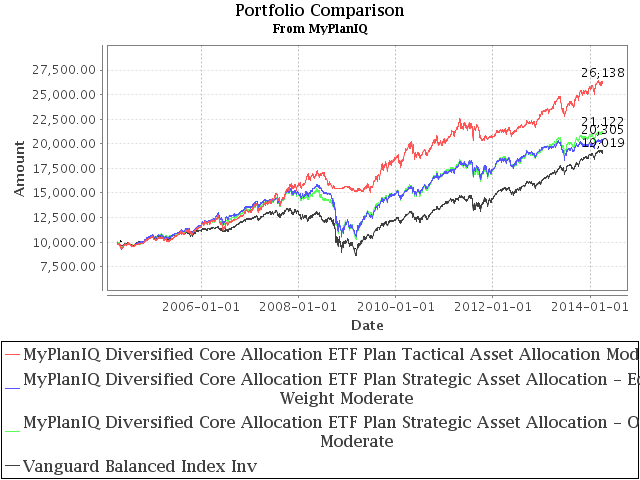

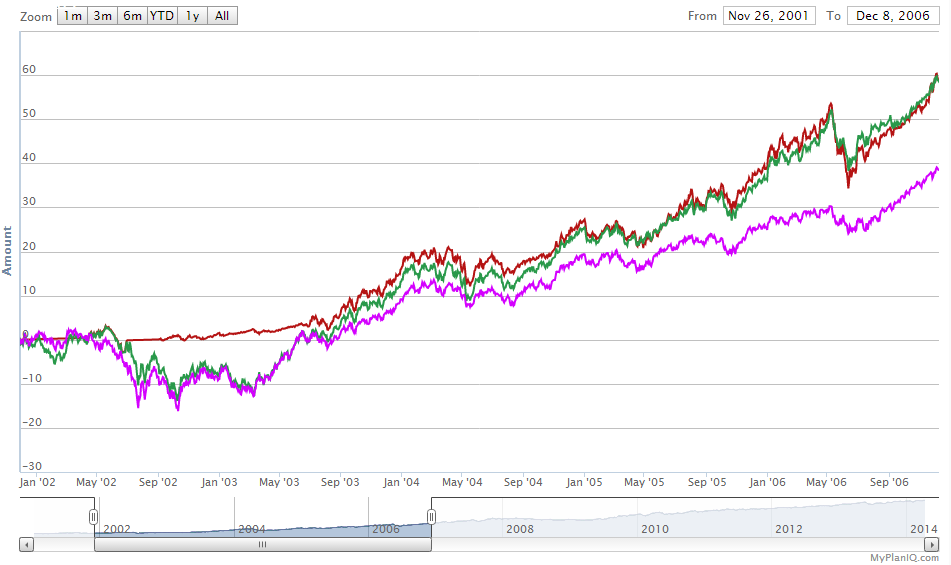
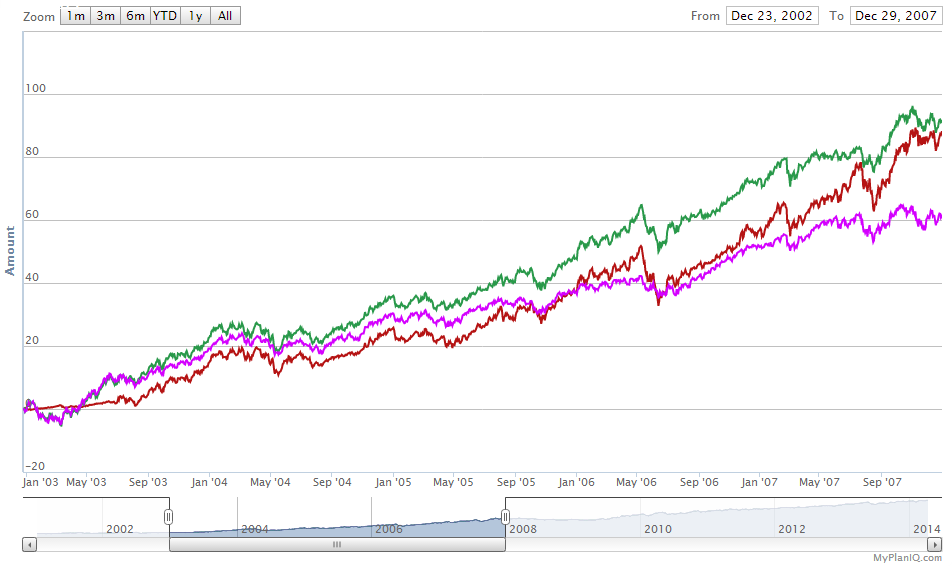
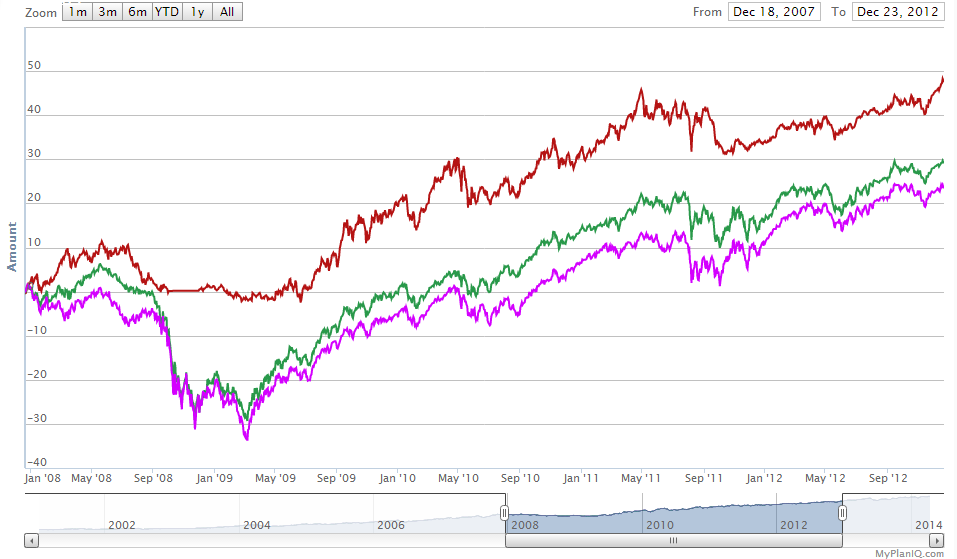
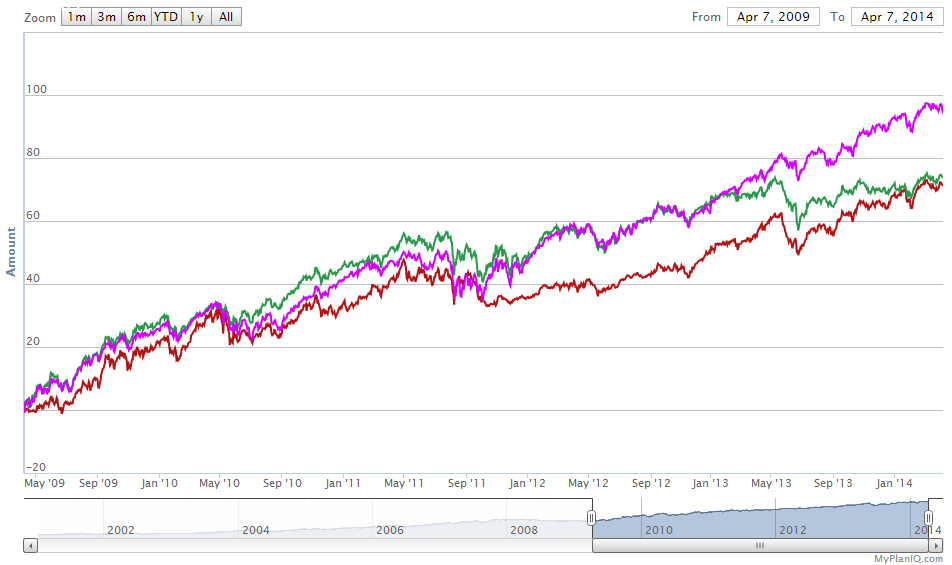

 Diversified Asset Allocation Portfolios For Your Plans
Diversified Asset Allocation Portfolios For Your Plans
